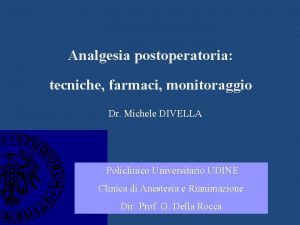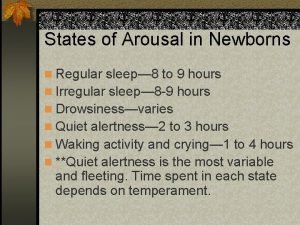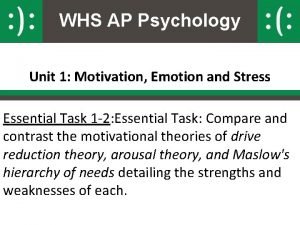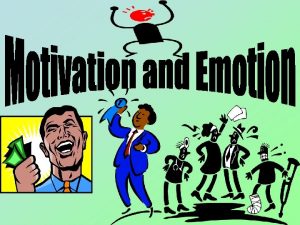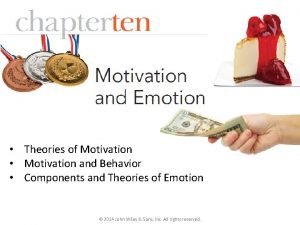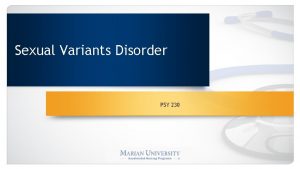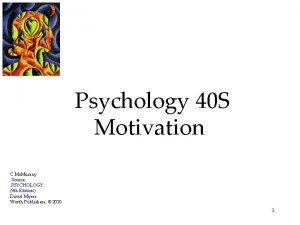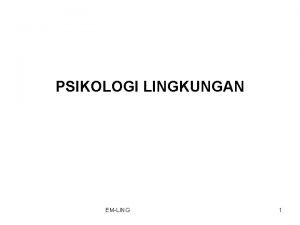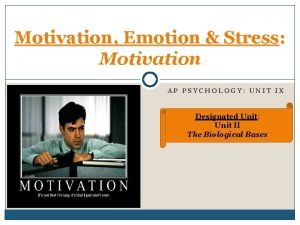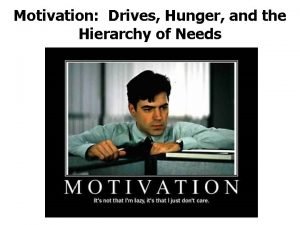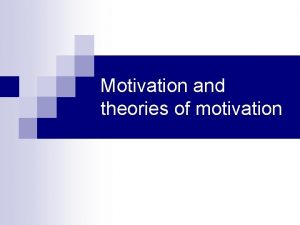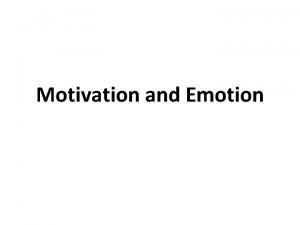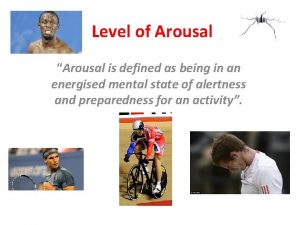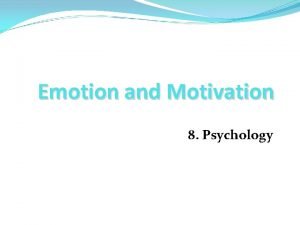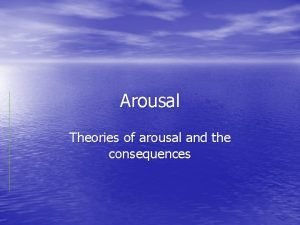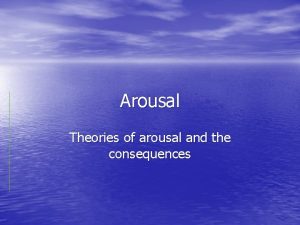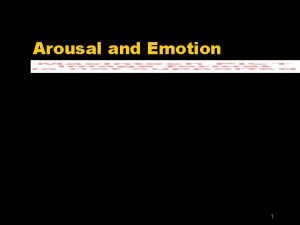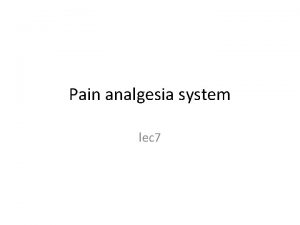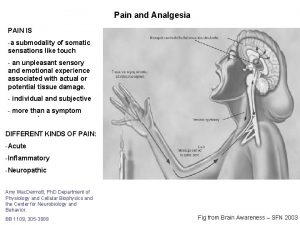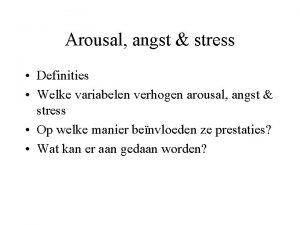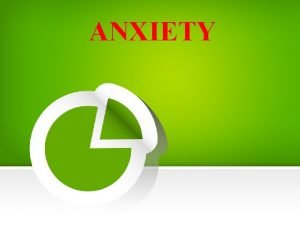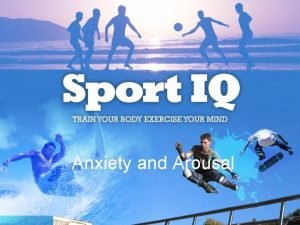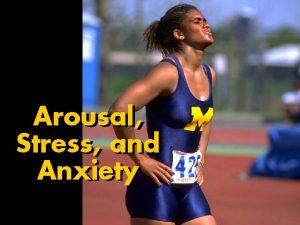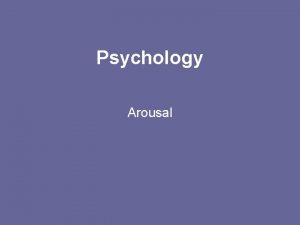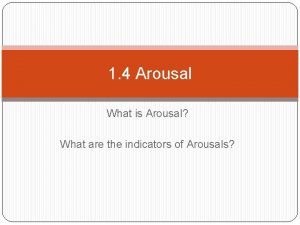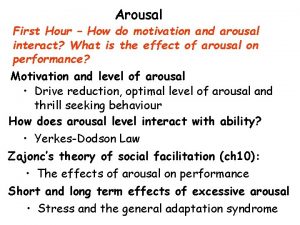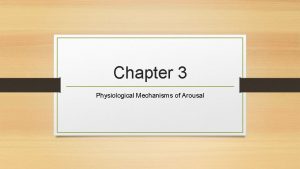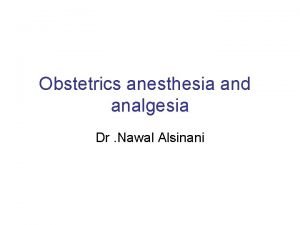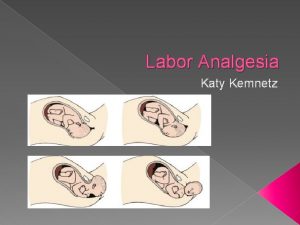Conscious Arousal Pain Analgesia Lesson 16 States of























- Slides: 23

Conscious Arousal, Pain, & Analgesia Lesson 16

States of Consciousness/Arousal A. Classical Sensory Afferents u CSA B. Thalamus C. Ascending Reticular Arousal System u ARAS D. Cortical Feedback ~

Classical Sensory Afferents Sensory information l external - from environment l internal - somatosensory n Most direct input to brain l Rapid l *point-to-point specificity n Also to reticular formation l slower, indirect input ~ n

S 1 Thalamus Brain stem Touch Brain Medulla DRG Spinal Cord R

ARAS Ascending Reticular Arousal System l inputs from CSA n General cortical arousal l via basal forebrain l 2 pathways ~ n

ARAS BF Thalamus n Ventral stream l via reticular formation n Dorsal stream l via thalamus ~ RF CSA

ARAS: Reticular Formation ACh - arousal l ventral reticular formation n NE - arousal l locus coeruleus n 5 HT - arousal l raphe nucleus ~ n

ARAS: Basal Forebrain ACh arousal n Adenosine inhibits *ACh l Caffeine: adenosine inhibitor n Histamine stimulates *ACh l Antihistamines drowsiness ~ n

ARAS Pharmacology: GABA Modulated l Basal forebrain l GABA decreased arousal l GABA increased arousal n Agonists l Barbiturates, ETOH, benzodiazepines n Antagonists l picrotoxin, strychnine ~~ n

What four letter word might come to mind when you smash your hand in a car door?

Pain = perception l subjective response. . . l to a noxious stimulus n Sensation = nociception l Nociceptors l free nerve endings ~ n

Spinothalamic Tract Sensory neuron l Glutamate (fast) l Substance P (slow) n Projects to spinal cord l gray matter l 2 d order neuron decussates ~ n

Pain S 1 Thalamus Brain stem Brain Periaqueductal Gray (PAG) DRG R Spinal Cord Substance P & Glutamate

Behavioral Analgesia Not always adaptive to attend to injury l fighting, fleeing, mating n Decreases. . . l nociception l subjective experience n Temporary effects n Opioid-mediated l aka Endorphins ~ n

Behavioral Analgesia n n Naloxone sensitive: l Stress (e. g. , Battlefield & Predation) l Acupuncture l Placebo Effects NOT sensitive to naloxone l Hypnosis l Meditation ? ? ? ~

Periaqueductal Gray (PAG) Opioid - GABA - + + Descending Analgesia Circuit Raphe System 5 -HT DRG R Spinal Cord

Analgesia in Spinal Cord n Raphe serotonin neuron mediates l 1. 5 -HT directly inhibits l 2. activates met-enkephalin uopioid l 3. activates GABA neuron ~~

Analgesia in Spinal Cord 5 -HT + Opioid Neurons Postsynaptic inhibition Presynaptic inhibition - - Substance P

Analgesia in Spinal Cord 5 -HT + GABA Neurons Postsynaptic inhibition Substance P

Nonopioid Analgesia n Naloxone bocks opioid-mediated analgesia l Induced by footshock u. Tail flick test Long intermittent (30 min) l naloxone no analgesia n Brief continuous (3 min) l naloxone still some analgesia n Suggests nonopioid analgesic systems ~ n

Nonopioid Analgesia n NMDA (N-methyl-D-aspartate) l Glutamate receptor l NMDA antagonist (MK-801) + naloxone blocks analgesia in males rats u female rats: attenuated u n Estrogen/progesterone analgesia l Ovariectomized female rats l nonopioid analgesia ~

Nonopioid Analgesia n n Developed from frog skin toxin l epibetadine l 20 x more potent than morphine l non-specific binding – too toxic for humans Found ACh agonist with similar structure l Altered ABT-594 ~

Cholinergic-mediated analgesia ABT-594: cholinergic agonist l Comparable to opiate analgesia l n. ACh-R in raphe nucleus n Fewer side effects l no euphoria l no constipation l no respiratory depression n Conotoxins from cone snail l neuropathic pain ~ n
 Analgesia sistemica
Analgesia sistemica Scala di bromage
Scala di bromage States of arousal
States of arousal Mad pain martian pain
Mad pain martian pain Sore boobs early pregnancy
Sore boobs early pregnancy Symptoms before period
Symptoms before period 11 free states
11 free states Southern vs northern states
Southern vs northern states Checks and balances dbq
Checks and balances dbq What is drive reduction
What is drive reduction Masolow
Masolow Optimum arousal theory
Optimum arousal theory Arousal disorder symptoms
Arousal disorder symptoms Sexual arousal in men
Sexual arousal in men Physiological needs according to maslow
Physiological needs according to maslow Contoh teori arousal
Contoh teori arousal Hunger motivation ap psychology
Hunger motivation ap psychology Drive reduction theory meme
Drive reduction theory meme Nnn motivation
Nnn motivation Stimulus motives definition
Stimulus motives definition Arousal level graph
Arousal level graph Physiological arousal
Physiological arousal Examples of physiological arousal
Examples of physiological arousal Physiological arousal
Physiological arousal

